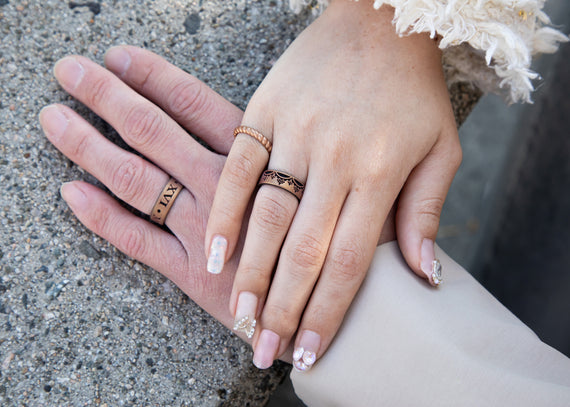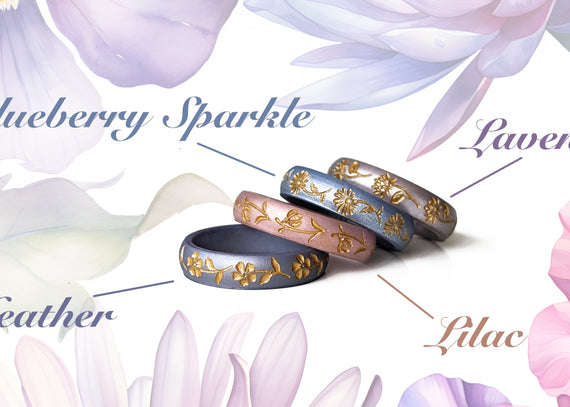We are so excited to launch this latest design: Laurel.
This seamless laurel design symbolizes victory, honor, and the continuous pursuit of excellence. Whether you're an athlete, an adventurer, or simply seeking a stylish and functional alternative to traditional rings, this ring provides a perfect union of comfort, style, and meaning to accompany you on any journey.
The Origin of Laurel
In Greek mythology, the laurel was associated with the god Apollo, who was the patron of music, poetry, and the arts. According to the myth, Apollo pursued the nymph Daphne, who rejected his advances. To escape him, Daphne called upon her father, the river god Peneus, to transform her into a laurel tree. Apollo, unable to possess Daphne, declared that from that moment on, the laurel would be his sacred tree. This story immortalizes the laurel as a symbol of victory, purity, and protection against evil forces.
The Romans adopted the symbolism of the laurel from the Greeks, attributing it to their god Apollo as well. They used the laurel wreath, made from the leaves of the laurel plant, to crown victors and high achievers in various fields, including sports, poetry, and military accomplishments. The laurel wreath became a symbol of honor, glory, and triumph.
In addition to its association with Apollo, the laurel also held significance in Roman society as a symbol of emperors and political power. Emperors wore wreaths made of laurel leaves as a sign of their authority and victory. The term "laureate" was used to describe poets and scholars who were honored for their achievements.
The laurel's symbolism extended beyond ancient Greece and Rome. In Christianity, the laurel represents the triumph of the soul over sin and death. It is sometimes associated with martyrdom and sanctity.
Today, the laurel continues to be revered as a symbol of victory, honor, and achievement. It is often depicted in various forms of art, architecture, and literature, representing excellence and greatness.
The laurel's association with victory and distinction has made it a timeless symbol that transcends cultures and time periods. Its graceful leaves and historical significance serve as a reminder of the enduring power of human achievement and the pursuit of excellence.







